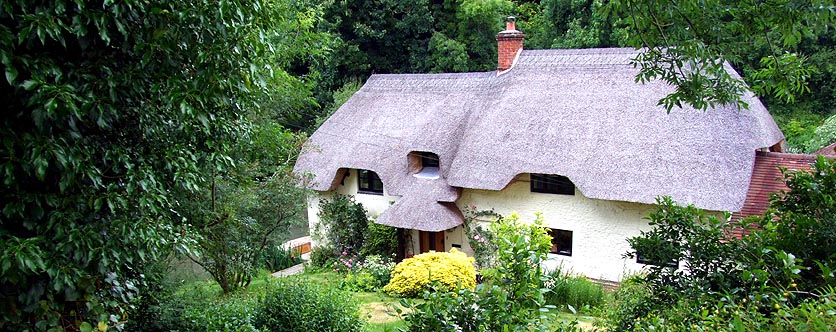 |
 |
|||
|
|
Letcombe Bassett Legend says the name of the twin villages of Letcombe Bassett and Letcombe Regis stems from a Saxon battle cry. During the Viking invasion of the 870s, the Danish army was based in Reading and battles, such as Ashdown, were frequent on the Downs. It is said that, during one such conflict, Danish blood ran down the valley and the Saxon villagers cheered on the home troops with cries of "Let it come! Let it come!". Etymologists prefer a derivation from the Anglo-Saxon 'Ledge Valley', though'Leoda’s Valley' is another possibility. It could, however, be Celtic Leito-Cwm, that is 'Grey Valley', or possibly Leito-Camp meaning 'Grey Open Land on the Outskirts of a Roman Settlement'. The Roman site would be the one at Belmont, adjoining Wantage, or perhaps the Segsbury Castle hillfort. The Bassett suffix comes from the family who once owned the manor in the mid-12th century. Now known for its horse racing stables and Grand National winners, Letcombe Bassett has always traditionally been famous for the growing of watercress, and "Bassett Cress" was a familiar cry in Old Covent Garden Market. It is therefore of no surprise to find that Thomas Hardy refers to the village as Cresscombe in his great work, Jude the Obscure. The pretty thatched cottage where Arabella lived, and where she first met Jude, can still be seen down by the Letcombe Brook. A less well known literary connection is with Jonathan Swift who spent the Summer of 1714 with his friend, Rev. Geree, at the fine Queen Anne rectory, just before his last retreat to Ireland. He is said to have sat and written his political pamphlet, ‘Free Thoughts on the Present State of Affairs,’ under the ancient mulberry tree in the garden. He was certainly visited there by Pope and other associates and heard the news, from Bolingbroke, that Queen Anne had died. The 12th century parish church has a Norman chancel with zig-zag decoration and a 13th century tower. The churchyard has some fine Cotswold style barrel topped tomb chests.
|
|||
| © Nash Ford Publishing 2008. All Rights Reserved. This location is now administered by Oxfordshire County Council. | ||||



